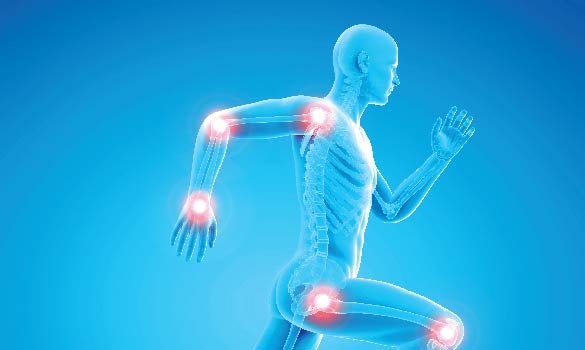
A quiet revolution in the treatment of spinal disorders has been taking place behind the scenes over the past 10 to 15 years. Parallel advancements in spine surgery such as the introduction of microneurosurgical techniques, together with computer navigation/robotics, improved microscope/ endoscope optics, implant biomechanics and intraoperative neuromonitoring have allowed for safe and effective spine surgery to be carried out with minimal downtime and complications for the patient.
Spine surgery has in fact evolved into a sub-specialty in its own right, mastered by surgeons who may have either had an orthopaedic or, increasingly now, a neurosurgical background.
INDICATIONS FOR SURGICAL CONSULTWhile spine surgery may have evolved rapidly, the indications for such surgery remain steadfast. The usual red flags should be screened for all patients presenting to the family doctor with back pain and leg pain. Cauda equina syndrome, whose symptoms and signs can be subtle in the beginning, has to be earnestly looked for. Bilateral sciatica, absent lower limb reflexes and saddle/perineal anaesthesia are warning signs, and patients who present such symptoms should be referred promptly before frank urinary retention sets in. Similarly, a deterioration in neurological function corresponding to the cervical or thoracic spinal levels should also be referred to a spine surgeon for urgent workup. A group that is often missed is those presenting with rapidly deteriorating cervical myelopathy, whose initial symptoms of hand numbness, finger dexterity issues and mild gait instability are often overlooked in the primary care setting. At the other end of the spectrum are those presenting with the following chronic symptoms which should prompt a referral for a surgical consult:
Continued conservative treatment in such instances may result in irreversible neurological damage and a poor outcome even after surgical intervention. |
THE ADVANTAGES OF MINIMALLY INVASIVE SPINE SURGERIES
The goals of spine surgery whether open or minimally invasive are the same.
The aim in most cases is to achieve decompression of the neural elements, and if required, stabilisation and fusion of the involved spinal segment while paying attention to the overall alignment of the patient’s spine.
Some patients, especially those who are younger with minimal facet degeneration on imaging, are candidates for a disc replacement procedure which is most often carried out in the cervical spine. This helps to treat the degenerate or herniated disc while maintaining motion of the spinal segment.
Both lumbar spinal decompressions and lumbar spinal fusions can be carried out through minimally invasive techniques.
The main difference between traditional open spine surgery and the newer minimally invasive techniques lies not in the cosmetic appearance and size of the incision, although that is often also significantly reduced, but in the preservation of the erector spinae group of muscles specifically the multifidus muscle. These are the natural stabilisers of the spine and minimal disruption to them results in much better postoperative outcomes.
MIS FOR DECOMPRESSION AND FUSION
Minimally invasive surgical techniques, such as the MIS TLIF (minimally invasive transforaminal lumbar interbody fusion) and MIS LLIF (minimally invasive lateral lumbar interbody fusion) techniques, allow for both decompression and fusion of the spinal segment with minimal disruption to the normal anatomy.
MIS FOR DECOMPRESSION WITHOUT FUSION
Other MIS decompression techniques without fusion include microdiscectomy, endoscopic discectomy, interlaminar decompression, MIS foraminotomy and endoscopic foraminotomy.
The aim is often either to remove the herniated disc or decompress the painful nerve root that is impinged, most often by a thickened ligamentum flavum or hypertrophied facet.
The surgical goal is often achieved through the use of a microscope or endoscope, working through ports and sleeves no larger than 1-2 cm in diameter. These surgical techniques have a steep learning curve to surmount, but once mastered, offer a splendid solution to the patient’s spinal problem.
ENHANCED RECOVERY AFTER SURGERY
Both MIS decompression and fusion lend themselves readily to the concept of enhanced recovery after surgery (ERAS).
This is a multimodal perioperative care pathway designed to achieve early recovery for patients undergoing major surgery.
- In our practice using techniques such as endoscopic discectomies and MIS TLIF, blood loss is markedly minimised. Intraoperative or postoperative blood product transfusions are almost never required and surgical site infections are exceedingly rare.
- There is no requirement for the placement of postoperative drains and there is no requirement for postoperative patient-controlled analgesia (PCA).
- In our practice, we routinely employ intraoperative neuromonitoring such as motor evoked potentials, free-running electromyography (EMG) and somatosensory evoked potentials for patients undergoing elective spinal surgery. This has helped reduce the risk of inadvertent neural injury to near zero.
- All our patients who have had minimally invasive spine surgeries including one- or two-level spinal fusions undergo same day (postoperative day zero [POD0]) mobilisation with the physiotherapist within two to four hours postoperatively.
- Oral short-acting opioid analgesics are given only for the first 24-48 hours postoperatively, and early discharge is encouraged with a return to normal physical activities by six weeks.
CONCLUSIONIn summary, minimally invasive spine surgery is here to stay and is continually evolving. Although the initial experience with these techniques over the years has been mainly with surgery of the degenerate spine, there is now growing evidence of the effectiveness in its use for metastatic spinal tumour surgery as well as in spinal trauma. |
Dr Dinesh Shree Kumar is the current Director for the Spine Surgery Service in Changi General Hospital (CGH), which is part of the Integrated Spinal Service consisting of both neurosurgeons and orthopaedic surgeons. Dr Kumar’s interests include minimally invasive spine surgery with computer navigation, and he introduced the O-arm with stealth station navigation in CGH.
GPs can call for appointments through the GP Referral Hotline at 6788 3003.













 Get it on Google Play
Get it on Google Play